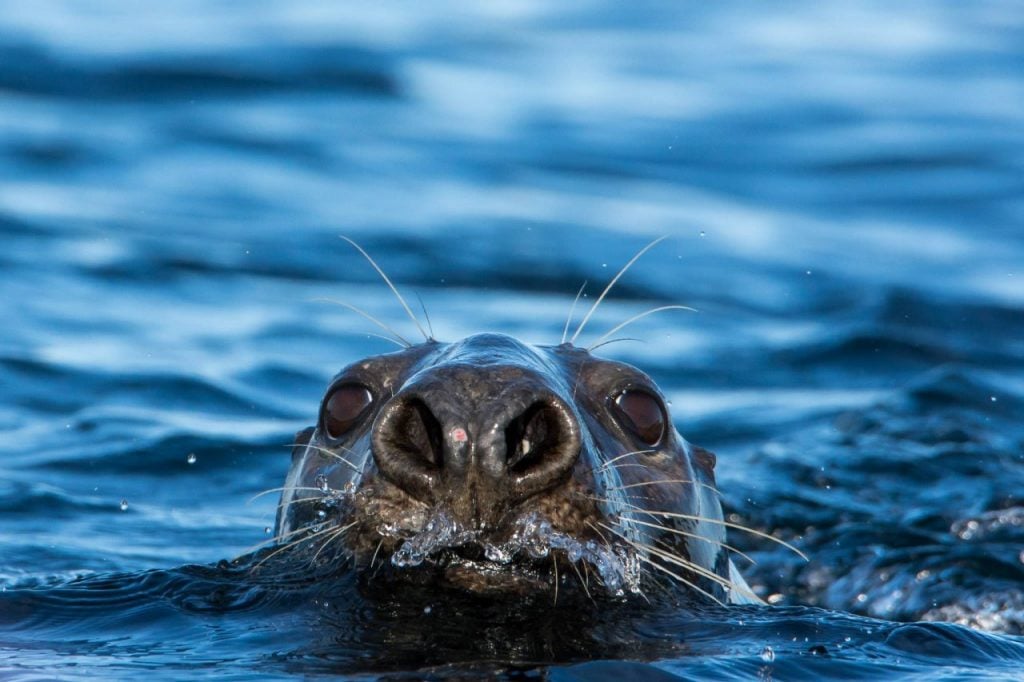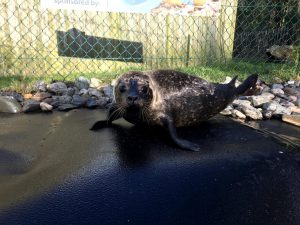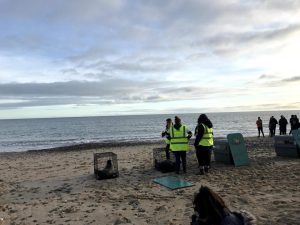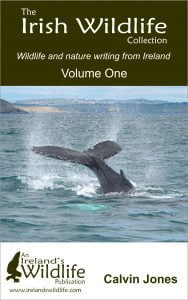
To the untrained eye, a grey seal and a common seal may look the same, yet there are key differences. Grey seals are huge. Males can weigh up to 300kg and grow to 2.5 metres long, whereas common seals are almost a third of the size. Grey seal pups are distinctly covered in white fur. Common seal pups, on the other hand, are born with a brown, waterproof coat, making them instantly adapted to swim. The easiest way to tell them apart is through their faces. “The common seals have more of a smushed face like a cat,” explains Hayleigh Gray, an intern at Seal Rescue Ireland in Wexford. “The grey seals have a more elongated snout, more like a dog.”

They are Ireland’s two native seal species and have been present in Irish waters for at least seven thousand years. Centuries of hunting for their meat and fur drove their populations down from hundreds of thousands to just a few hundred until the introduction of the Wildlife Act in 1972 banned such practices. However, both grey and common seals continue to face a host of threats, from water pollution, human disturbance and disease to entanglements in fishing nets, as well as cullings by local fishermen who see them as competition to dwindling fish stocks. Currently, the two biggest dangers to seal numbers and other marine wildlife are plastic and climate change.
“Every bit of plastic that’s ever been put into circulation is still in existence today,” says Melanie Croce, executive director at Seal Rescue Ireland. “It’s projected that by the year 2050, there will be more plastic in the ocean than fish.”
Seals, in particular, are vulnerable to plastic as they are opportunistic eaters and can easily mistake the fluttering of a floating crisp packet for the silvery scales of a fish. The rescue centre has seen a few cases of seals mysteriously dying, only to later find plastic in their stomachs. The increase in the severity and frequency of storms due to climate change is also a cause for concern. When a large storm hits the Irish coastline, seal pups can become separated from their mothers, leaving them vulnerable to drowning or sustaining injuries from being thrown against the rocks. At this critical stage of their lives, their immune systems are not fully developed and wounds can lead to fatal infections.
There’s not enough data to count exact grey seal numbers, yet it’s estimated there are between seven and twelve thousand in Irish waters and their population is stable. Over in the UK however, there are 150 thousand grey seals, meaning the Irish population has a long way to go before it’s on par with what it used to be. “There are fewer than 350 thousand grey seals worldwide and that’s fewer than African elephants,” says Melanie. “That means that the grey seal population between Ireland and the UK is incredibly valuable from a global perspective.”
While the grey seal population is on the up, the number of common seals is on the decline, which Melanie explains is likely due to disease outbreaks, limited food sources and the effects of climate change. With just two and three thousand in Ireland, they are flagged as a species of special concern.

Seal conservation is important not just for the survival of their species but for the overall health of the environment. They are a bio-indicator species, meaning the condition of their habitat can be determined by the size and robustness of the seal population. Known as the “doctor of the sea”, seals maintain healthy fish populations by picking off sick or injured fish. “The threats that seals are facing are the same threats that everything else, such as whales, dolphins, sea turtles, sea birds and fish, are facing,” says Melanie. “If we can engage the public to protect the seals, then we are actually impacting all of these other species and protecting them too.”
What are the solutions to seal and marine conservation? Rescue centres such as Seal Rescue Ireland provide immediate aid and shelter to seals in need. The goal though is to focus on long-term conservation strategies through education, research and community projects. Spreading the importance of avoiding single-use plastic, reducing meat consumption and recycling are all key steps towards a more sustainable future both for seals and wildlife in general.
Human disturbance is among the key dangers that impact wildlife. “If an animal is deviating its natural behaviour in any way because of your presence, it means you’re too close and that is considered disturbance,” explains Melanie, adding that a 100-metre distance between observers and seals is the recommended minimum. A mother seal may only be a few metres away in the water from a seemingly lonely pup on the beach, and getting too close may cause her to flee and abandon it.
Seal conservation represents wildlife conservation at large. The species can be protected by short-term solutions such as rescuing sick and injured animals and nursing them back to health for release back into the wild. In the long-term, the answer is to increase awareness of sustainable practices, so that wildlife and people can flourish together.









1 comment
Michelle King
There are seals near Baltray in Drogheda. I know one species has pups in September so they are best left alone, but for how long? And what is the other species’ time for having pups? Obviously asking while knowing to keep my distance.